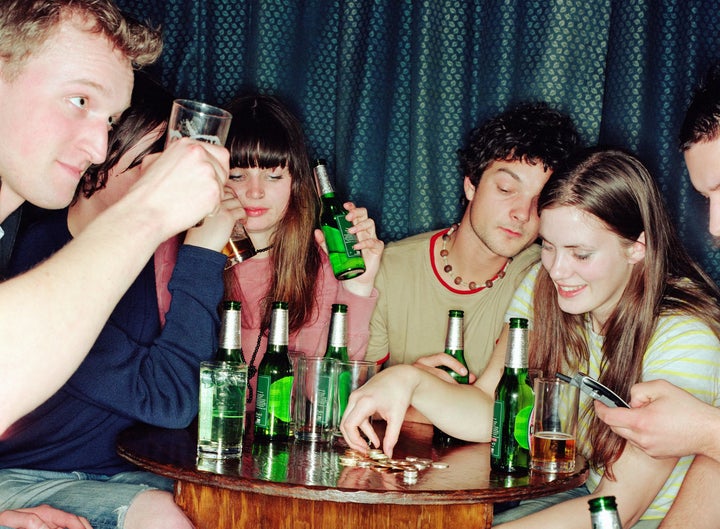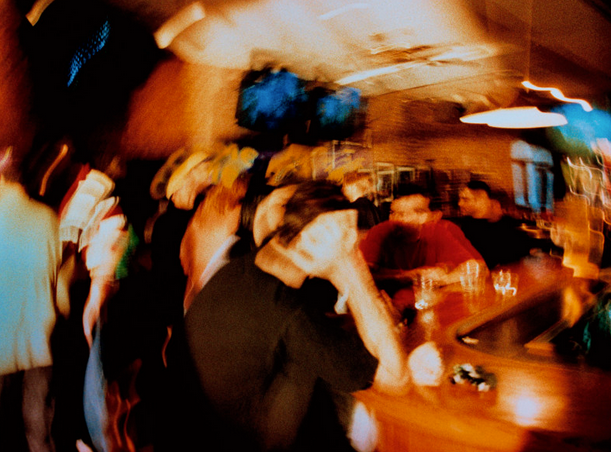
If you’re pulling the crew together for a bar crawl on St. Paddy’s Day, just keep one thing in mind: It only takes a few drinks to cross over into “heavy” or “binge” drinking territory.
Here’s a breakdown of alcohol consumption by category, according to the 2015 Dietary Guidelines.
Moderate drinking: Up to one drink for women per day and up to two drinks for men per day. One alcoholic drink has 0.6 fl. oz. of pure alcohol, which means that 12 fl. oz. of beer with 5 percent alcohol, 5 fl. oz. of wine with 12 percent alcohol or 1.5 fl. oz. of 80 proof distilled spirits with 40 percent alcohol all count as a single drink. For pregnant women or people under 21 (the legal drinking age in the U.S.), there is no moderate or safe amount of alcohol.
High-risk/heavy drinking: For women, it’s four or more drinks in one day or eight or more drinks per week. For men, it's five or more drinks in one day or fifteen or more drinks per week.
Binge drinking: For women, it’s four or more drinks within two hours. For men, it’s five or more drinks within two hours.
Heavy or binge drinking, which experts lump together under the “excessive drinking” umbrella, causes 88,000 deaths in the U.S. each year and costs the country an estimated $224 billion, notes the Guidelines. Binge drinking counts for most of these deaths and costs, and is also linked to a higher risk of sexually transmitted diseases, alcohol poisoning, liver disease, sexual dysfunction, violence and accidental injuries.
Now at this point, we’re not going to ask for a show of hands to see which category you fall into. But to get a picture of how much Americans drink, here are a few sobering facts, courtesy of the Centers for Disease Control and Prevention.
- One in six U.S. adults binge drinks four times a month.
- Binge drinking is most common among young adults (18 to 34 years) and senior citizens (over 65 years).
- Binge drinking is more common among wealthier households that have incomes of $75,000 or more, as opposed to people with lower household incomes.
- About 90 percent of the alcohol consumed by people under 21 is done via binge drinking.
But wait! you say. Isn’t alcohol supposed to be healthy for you? Well, yes and no. While some evidence suggests that a moderate amount of alcohol can be part of a healthy lifestyle, it isn’t some magic health tonic. If you don’t already drink (about 30 percent of Americans claim they don’t touch the stuff), there’s no health reason compelling enough to start doing so now.
If you’re going to indulge on St. Patrick’s Day (or any other day), be sure to first check out the Rethinking Drinking site produced by the National Institute on Alcohol Abuse and Alcoholism. It has tools that can help you calculate how much alcohol is in your mixed drink, how much alcohol is in different sizes of drinks and how much alcohol you have in your blood -- a key number for determining whether or not it’s safe for you to drive home after that party.
To slow your roll when it comes to your bar crawl, try to make sure you have no more than one drink every hour, and to drink a non-alcoholic drink in between every alcoholic drink.
Do you want to be more mindful about eating healthy foods that’ll keep your mind and body at their best? Sign up for our newsletter and join our Eat Well, Feel Great challenge to learn how to fuel your body in the healthiest way possible. We’ll deliver tips, challenges and advice to your inbox every day.
